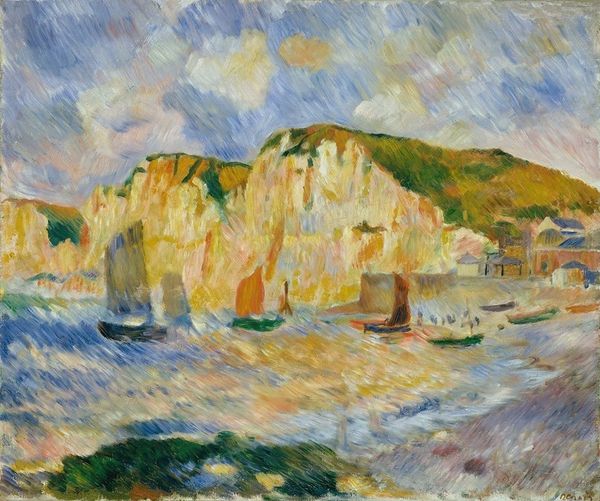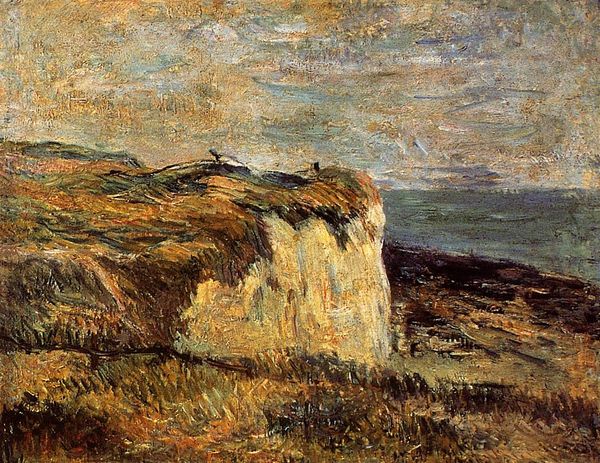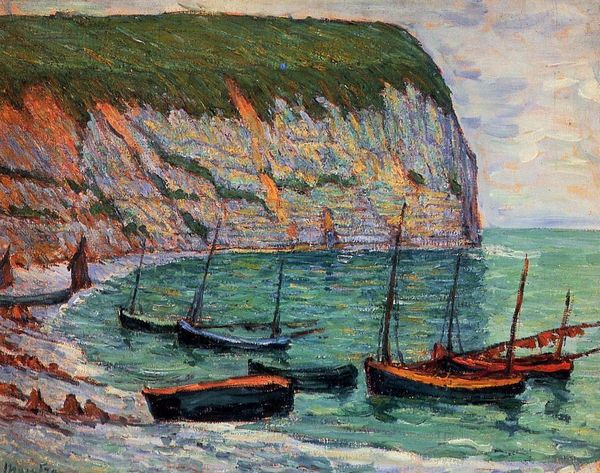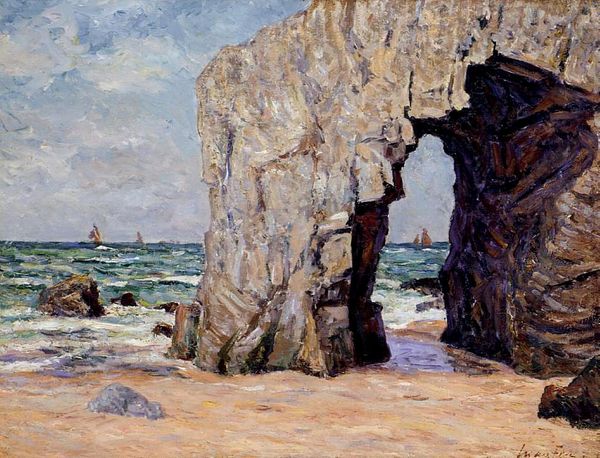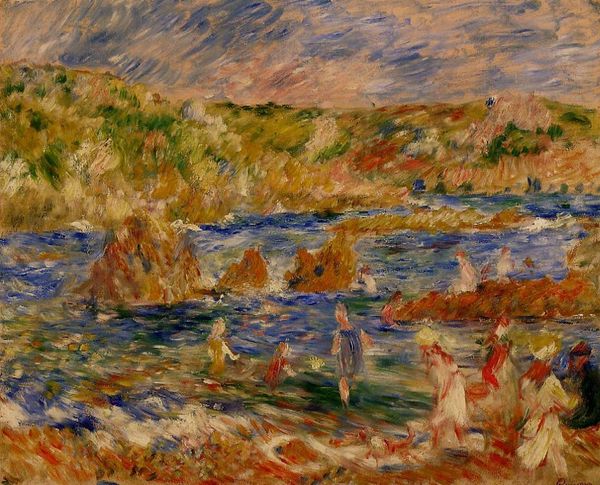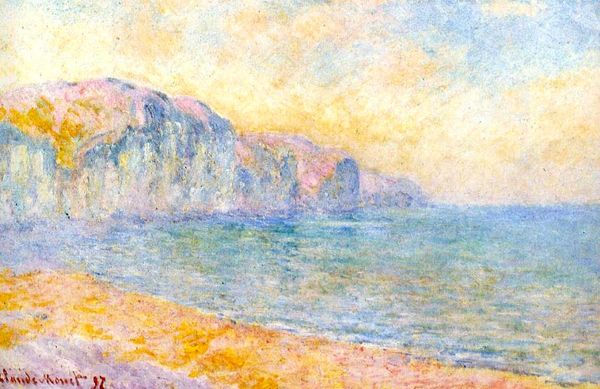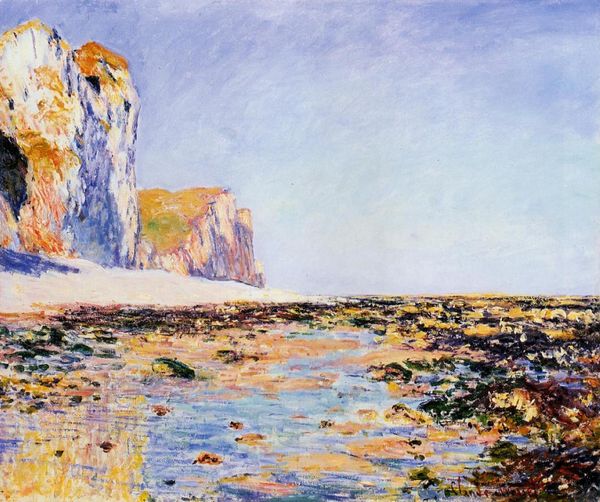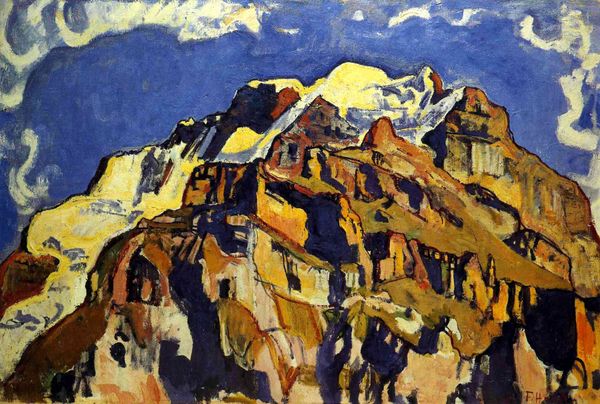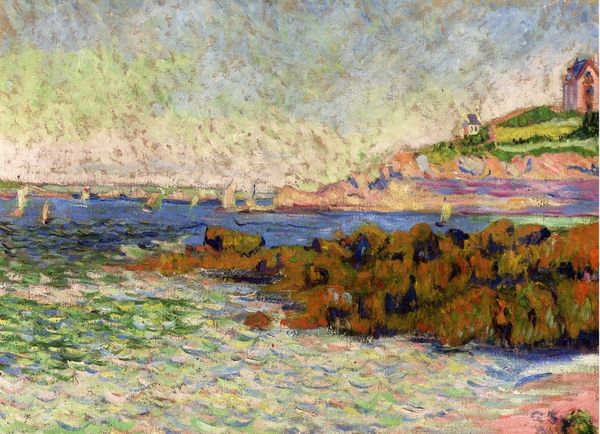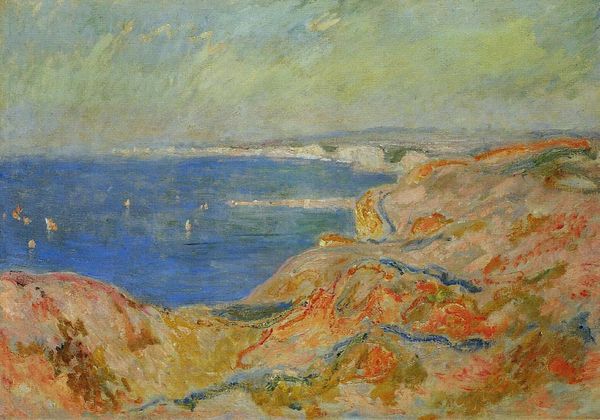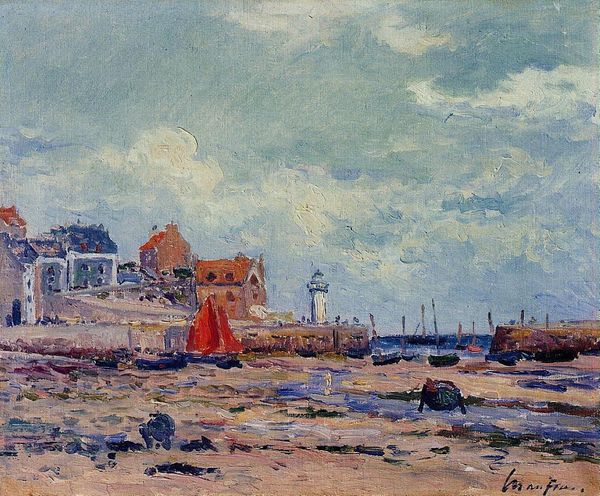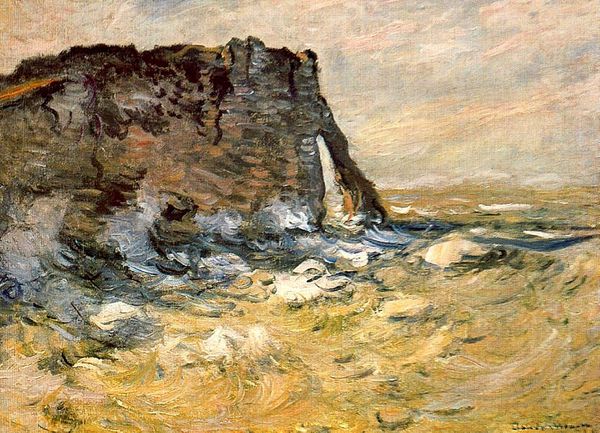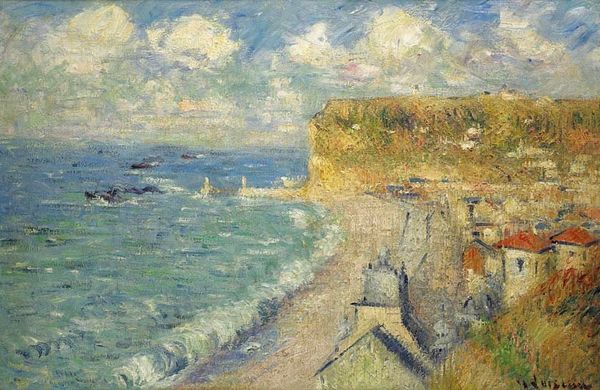
painting, plein-air, oil-paint
#
impressionist
#
sky
#
cliff
#
abstract painting
#
painting
#
impressionism
#
impressionist painting style
#
plein-air
#
oil-paint
#
landscape
#
impressionist landscape
#
rock
#
seascape
Copyright: Public domain
Curator: Today we're observing Pierre-Auguste Renoir's oil-on-canvas painting, "Cliffs", from 1883, currently held in a private collection. What strikes you first about this landscape? Editor: The frenetic energy! Look at how the strokes build up to define the cliff face. There's this dazzling visual language almost verging on abstraction, pushing against any sense of stable form. The color itself feels like the subject more than the place depicted. Curator: It's interesting you say that, given the subject is a location – likely along the Normandy coast, based on his other works. Coastlines and bodies of water in art often serve as thresholds to other worlds or reflect states of emotional turmoil, transition. Editor: Precisely, but is it a real place here, or a study of painterly problems? The interplay between warm yellows and cooler blues sets up such a dynamic tension that threatens to overtake the mimetic function. It anticipates, perhaps, the Fauvist color explorations to come. The composition is intriguing. Curator: Very much so. Beyond that raw painterly force, what of its time? 1883 places this squarely within Renoir’s Impressionist period; therefore it is worth considering what that choice signifies in relation to his artistic trajectory and cultural memory. The seascape has long carried an appeal linked to exploration and the vast unknown. This could indicate a shift in values, emphasizing immediacy and individual sensation in contrast to classical artistic techniques. Editor: But does that emotional impact genuinely land? I see bravura brushwork certainly, and this vibrant materiality, but I question its effectiveness to truly resonate in contrast with something like a Friedrich seascape, steeped in Romantic drama and symbolism. It feels as if the formal exploration has to come first and any iconographic meaning might be just superficial. Curator: That is insightful. Still, this is what’s compelling about it to me; we have this artistic investigation of objective experience against the backdrop of our deeper yearnings for meaning that the visual landscape invites. Renoir almost paints over it, but this deeper significance subtly lingers in the imagery. Editor: Perhaps that tension is exactly the point – it is interesting. Ultimately, Renoir uses that dynamic, and the painting achieves its impact through its radical play between the immediate and more timeless ideas. Curator: Absolutely, and thinking about its position historically helps us notice this interplay with new appreciation.
Comments
No comments
Be the first to comment and join the conversation on the ultimate creative platform.
